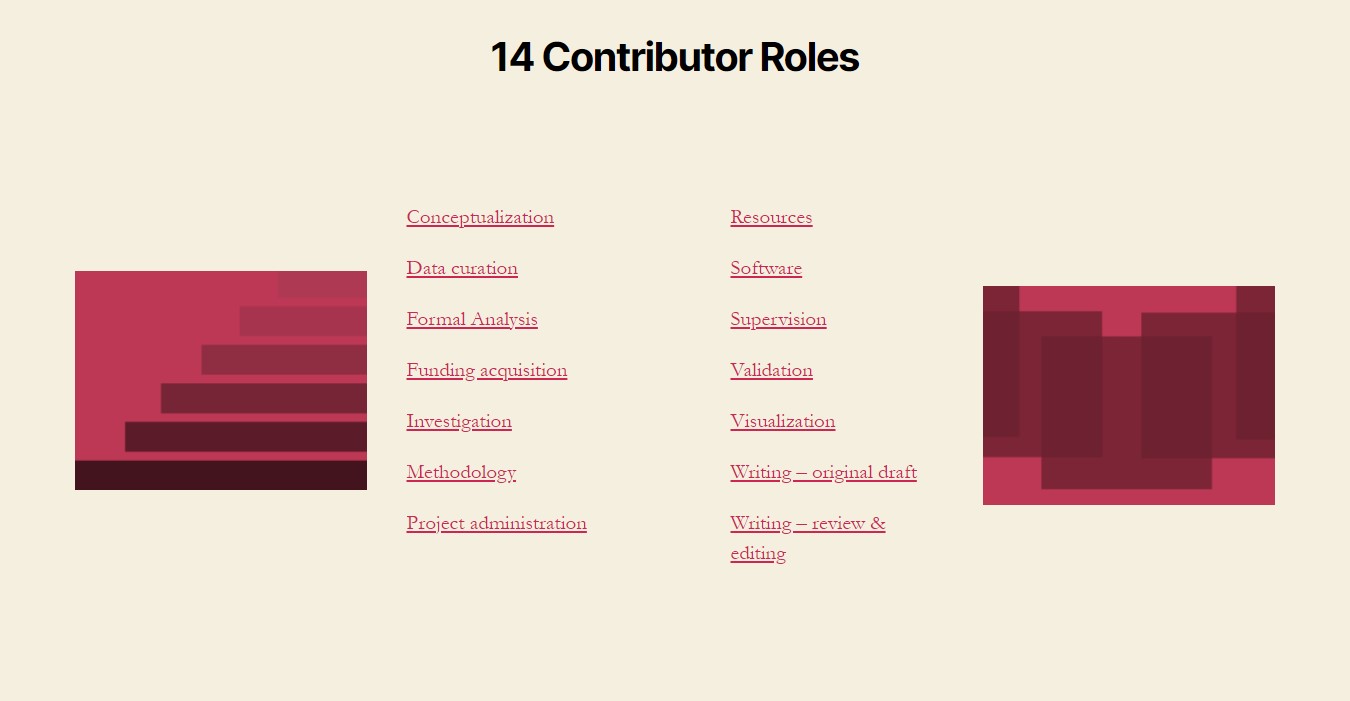Recognizing contributions to research - how should you credit?
Published by Alison MooreContributors and collaboration

As research becomes more collaborative, there’s a good chance you’ll find yourself part of a team of researchers. Your group might include undergraduate and graduate students, faculty, community researchers, and other people, who have different roles and responsibilities while working together on a project. Who gets to be named in the publication? How do you determine how the authors are listed? Which kinds of “contribution” count?
As a response to the changing landscape of knowledge production (see Open Science, Open Scholarship) and as acknowledgment of the multitude of forms that contribution can take, new systems of recognizing (and valuing) each person’s contribution to research have been proposed. These new ways also help to meet growing movements towards transparency and accountability in research by documenting people’s roles and responsibilities. One such system – a taxonomy – is CRediT.
What are problems with traditional methods of naming authors?
- No info on the type of contribution
- Often leaves out important but non-traditional contributions (e.g. data curation, fundraising)
- Insufficient accountability when tracing contributions
- Disputes among team members around recognition
- Variation in naming conventions can be unclear and vary by field
- Ethical issues due to lack of clarity on authorship: ghost, guest, orphan, and forged authorship; promotion, tenure, and grant decisions
One solution: the CRediT taxonomy & how it works
The CRediT taxonomy is a system for describing different ways people contribute to research. It currently includes 14 roles, each one being a different form of contribution. One analogy that’s been used to describe this system is to think of film credits, where specific kinds of contributions (e.g. sound effects) are attributed to the people who worked on them.

It’s primarily up to journals, publishers, and publishing platforms to adopt CRediT and advocate for adoption of the system by others and in policy changes. That way, anyone whose work is published with the journal or on their platform will use the same classification, and journals can better “talk” to each other using consistent metadata. For every publication, your team would then adopt these categories to define each person’s role, as best as possible, noting who worked in which role(s); you can optionally add nuances, including degree of contribution.

How does having contributor roles help?
- Encourages collaboration and co-creation of knowledge through recognition of different roles
- Emphasizes the importance of various stages and aspects of research
- Clarifies specific contributions to help with promotion and tenure decisions
- Promotes transparency and accountability by clarifying roles and reducing “honorary” authors or ghost authorship
- Standards can help ensure consistent metadata
CRediT was adopted by PLOS (Public Library of Sciences), AACR (American Association for Cancer Research), and as of 2018, by over 120 journals or publishers. CRediT and NISO (National Information Standards Organization) have also been collaborating to make CRediT more widely recognized. There is still work to do to improve the taxonomy – including looking at how different disciplines require different kinds of attribution.
Further reading
- Allen, L., O’Connell, A., & Kiermer, V. (2019). How can we ensure visibility and diversity in research contributions? How the Contributor Role Taxonomy (CRediT) is helping the shift from authorship to contributorship. Learned Publishing, 32(1), 71–74.
- Brand, A., Allen, L., Altman, M., Hlava, M., & Scott, J. (2015). Beyond authorship: Attribution, contribution, collaboration, and credit. Learned Publishing, 28(2), 151–155.
- Kiser, G. L. (2018). No more first authors, no more last authors. Nature, 561(7724), 435–435.
- Ph.D, B. M. (2011). Responsible Authorship: Why Researchers Must Forgo Honorary Authorship. Accountability in Research, 18(2), 76–90.
- Vasilevsky, N. A., Hosseini, M., Teplitzky, S., Ilik, V., Mohammadi, E., Schneider, J., Kern, B., Colomb, J., Edmunds, S. C., Gutzman, K., Himmelstein, D. S., White, M., Smith, B., O’Keefe, L., Haendel, M., & Holmes, K. L. (2020). Is authorship sufficient for today’s collaborative research? A call for contributor roles. Accountability in Research, 0(0), 1–21.
Image credits
team by priyanka from the Noun Project
Research by jokokerto from the Noun Project
Post by Jess Yao


